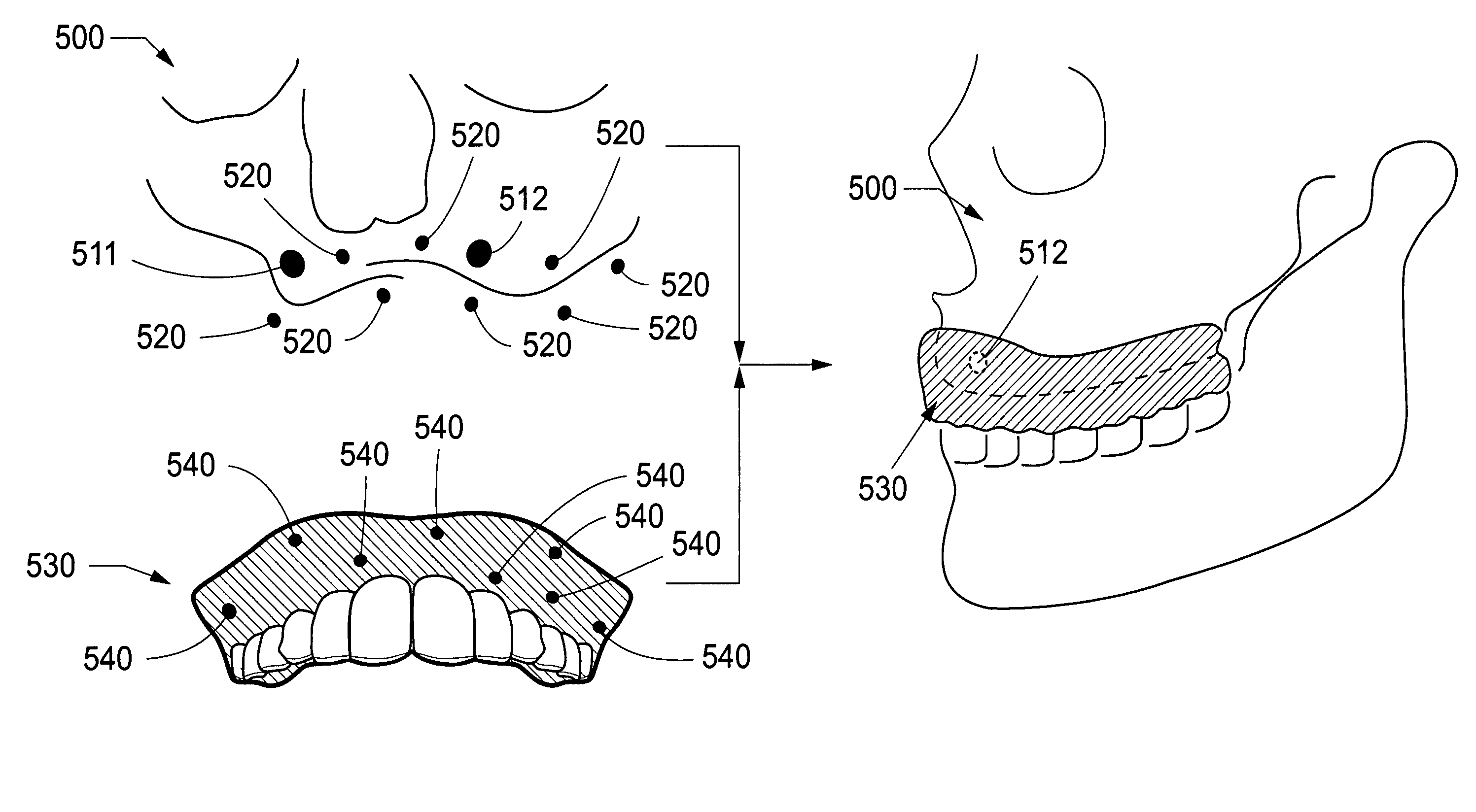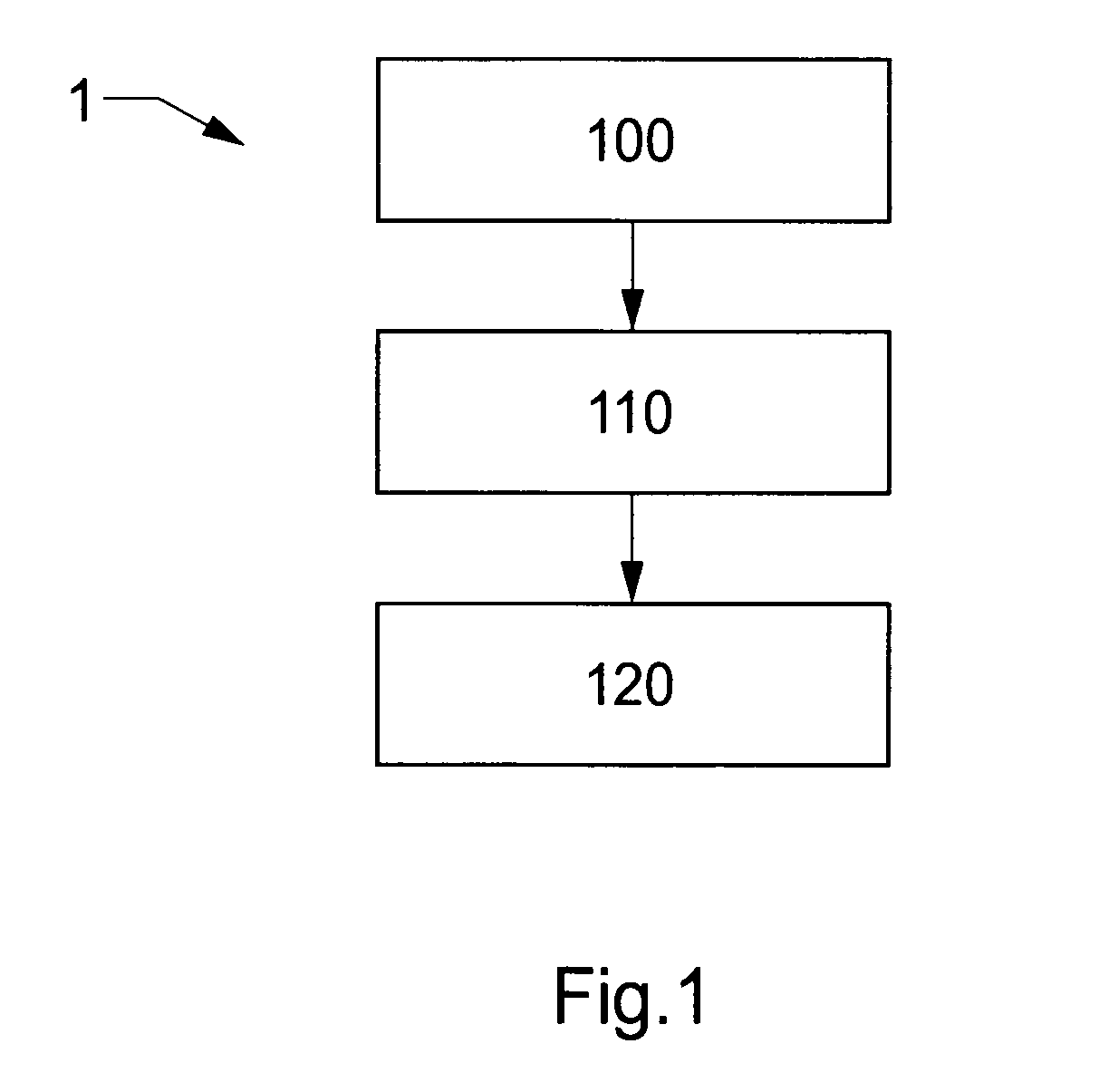Repositioning of components related to cranial surgical procedures in a patient
a cranial surgical and patient technology, applied in dental surgery, osteosynthesis devices, instruments, etc., can solve the problems of non-unambiguous anatomical structure in the oral cavity, non-desired positioning of implants, and difficulty in positioning the real surgical template manufactured based on virtual planning data, so as to achieve efficient preventing loosening, migration or movement
- Summary
- Abstract
- Description
- Claims
- Application Information
AI Technical Summary
Benefits of technology
Problems solved by technology
Method used
Image
Examples
example 1
[0187]a) A surgeon positions at least one temporary anchoring implant (reference structure) into jaw bone tissue that only a top part of the head section thereof protrudes into the soft tissue.[0188]A radiographic guide (master structure) in form of a duplicate prosthesis with gutta percha markers is put into position, and slid over the head section in the soft tissue, such that the master structure has a defined relation to the reference structure.[0189]c) A first CT scan is performed with the patient wearing the radiographic guide and a radiographic index, providing a first set of data. The first scan may be performed with a low dosage CT scanner to minimize radiation impact on the patient.[0190]d) A second CT scan of the radiographic guide only is performed, providing a second set of data.[0191]e) Virtual planning of the dental restoration and medical procedure is performed, providing production data for a surgical template based on an associated data set of said first data set a...
example 2
[0199]a) an OPG of the subject is taken, with radiopaque markers to define reference points in the flange, e.g. two markers positioned at the top edge of the prosthesis in order to identify position of jaw bone tissue in relation to the prosthesis[0200]b) the prosthesis of the patient is duplicated, e.g. from an impression made thereof providing a form for casting in a cold acrylic material, providing a duplicate prosthesis for use as a radiographic guide[0201]c) either at least one anchor screw are provided in the radiographic guide, via corresponding through holes thereof, or at least one temporary anchor implant is screwed into jaw bone tissue at a suitable position thereof, and the radiographic guide is suitably matched to possible protruding parts of the proximal end of the temporary anchor implant by creating suitable recesses in the radiographic guide, such that it fits into place over the protruding part
[0202]Alternatively, or in addition to step a) described above, bone pos...
example 3
[0203]a) at least one temporary anchor implant is inserted into jaw bone tissue of a patient[0204]b) a dental impression of the patient is made with a triple tray[0205]c) A CT scan is made of the patient wearing the triple tray and the dental impression therein, wherein the triple tray is provided with fiducial markers, e.g. of gutta percha—providing a first data set for the position and direction of the temporary anchor implant as well as the dental impression in relation thereto[0206]d) the dental impression is converted to a second data set, e.g. by means of a 3D scanner, such as a touch probe scanner or an optical scanner, wherein the position of the fiducial markers is provided by a suitable geometrical form thereof, which is registered by the 3D scanner[0207]e) the first and second data set are associated as described above, providing a third data set for production of a surgical template.
[0208]In case the temporary anchor implant or anchor screw is provided at a position wher...
PUM
 Login to View More
Login to View More Abstract
Description
Claims
Application Information
 Login to View More
Login to View More - R&D
- Intellectual Property
- Life Sciences
- Materials
- Tech Scout
- Unparalleled Data Quality
- Higher Quality Content
- 60% Fewer Hallucinations
Browse by: Latest US Patents, China's latest patents, Technical Efficacy Thesaurus, Application Domain, Technology Topic, Popular Technical Reports.
© 2025 PatSnap. All rights reserved.Legal|Privacy policy|Modern Slavery Act Transparency Statement|Sitemap|About US| Contact US: help@patsnap.com



